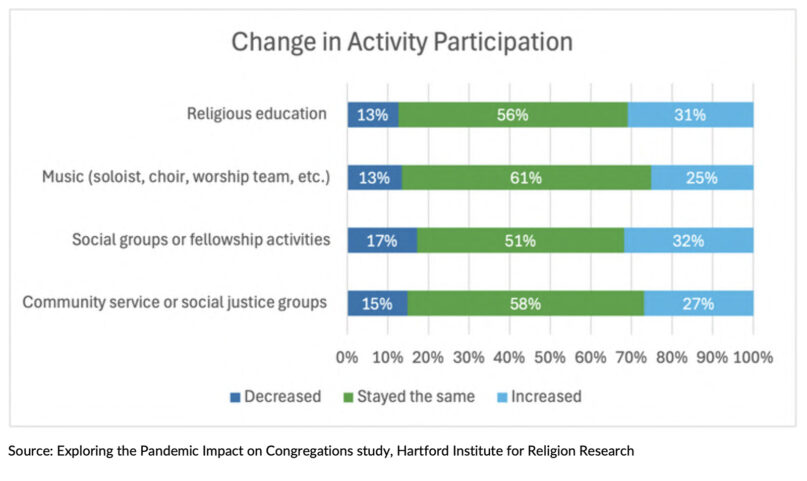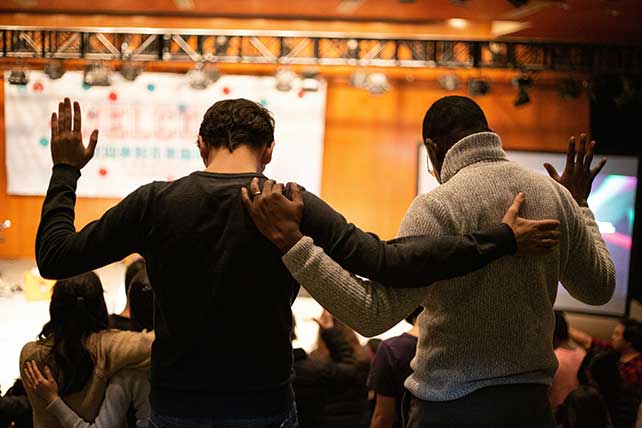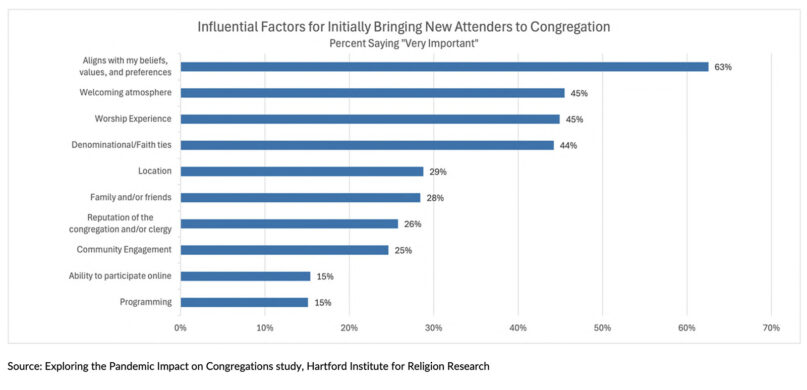Evangelical church attenders reported high attendance in most of the programs except community service, an activity in which mainline church congregants were more likely to note increased participation.
Black church attenders reported higher levels of participation in all the activities than congregants at other churches. Despite the finding that Black church attenders are less likely to worship in person, this subgroup of congregants is nevertheless among those who have considerable small group participation.
A sizable percentage — 38% — of respondents said they had started attending their current church within the last five years.
“Interestingly, among the new attenders in the survey, 22% report not having attended a congregation for years and 8% indicate they never participated in a congregation before the one they currently attend,” the report notes. “This combined 31% of new attendees represent former religious ‘nones’ or congregational converts who are embracing organized religion for the very first time in their lives or returners who have been ‘re-churched’ after a lapse in participation.”
“Influential Factors for Initially Bringing New Attenders to Congregation” (Graphic courtesy HIRR)
By far, the most influential factor that drew new congregants to a church was an alignment with their values, beliefs and preferences (63%). More than 4 in 10 cited a welcoming atmosphere (45%), the worship experience (45%) and the denominational/faith ties (44%).
Almost two-thirds (61%) of those surveyed were women, 73% were white and 10% were immigrants (and 27% were children of immigrants).
Thumma cautioned that the survey results likely paint a rosier picture because they are based on the views of active participants. A survey of church leaders, he said, may offer a broader sense of the state of a congregation, including the very committed members and people who are less so. He also noted that five years past the start of the pandemic, churchgoing patterns — from attendance to giving to religious education — continue to shift.
“So far, no two surveys we have done record a static ‘back to normal’ reality has been established,” he said in an email to Religion News Service. “Things are still in flux. The impact of the pandemic on congregational life has a long tail of influence.”
The findings are from a survey of a total of 24,165 adults representing more than 80 denominations, with an overall margin of error of plus or minus 0.6 percentage points. They were based on responses from congregations requested by the Faith Communities Today partnership (12,658) and supplemented by responses to two other panels, Survey Monkey Audience (2,784) and Prolific (8,723). Respondents from the latter two sources were selected and screened based on church attendance of at least a few times a year, not counting funerals or weddings.

“Change in Activity Participation” (Graphic courtesy HIRR)
This article originally appeared here.


